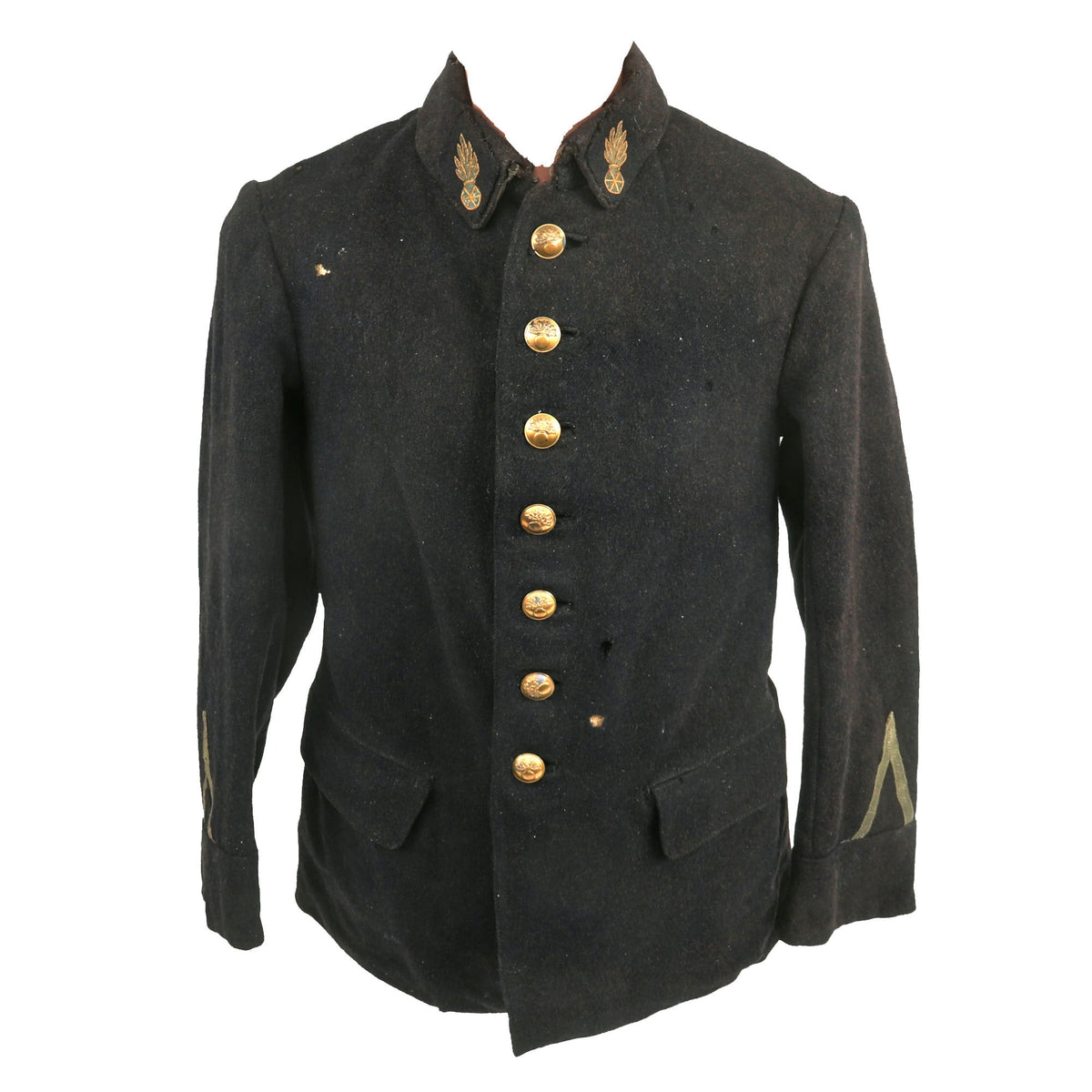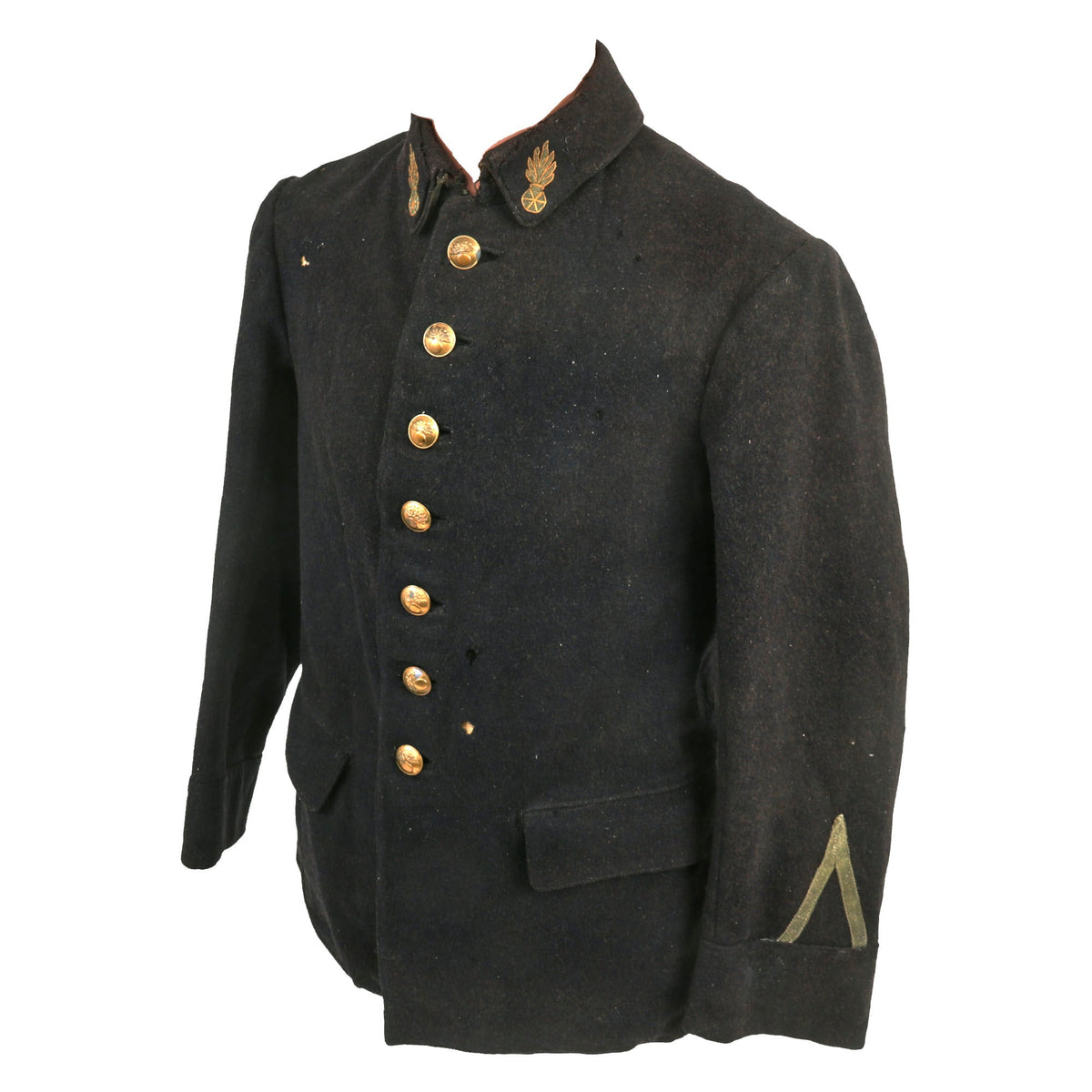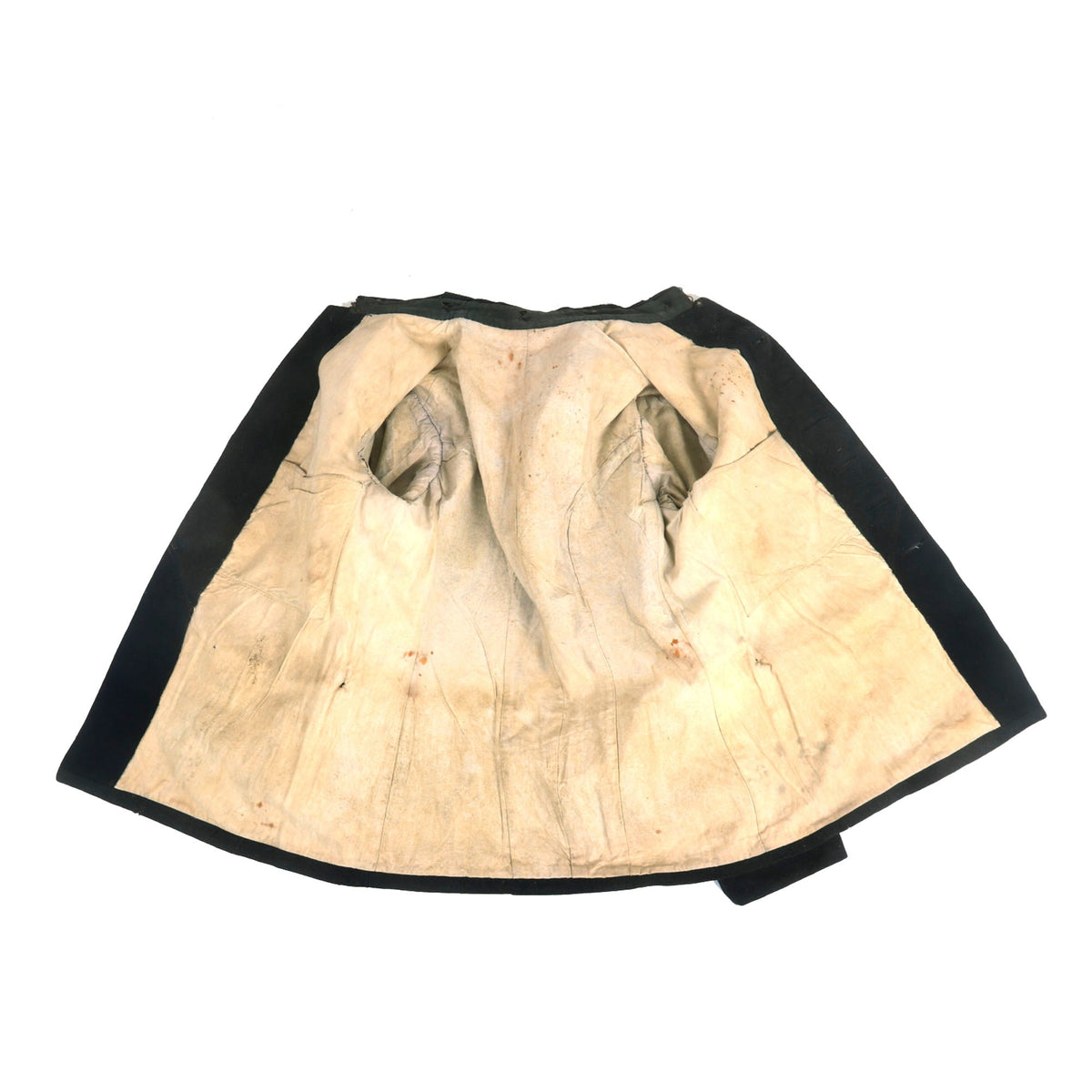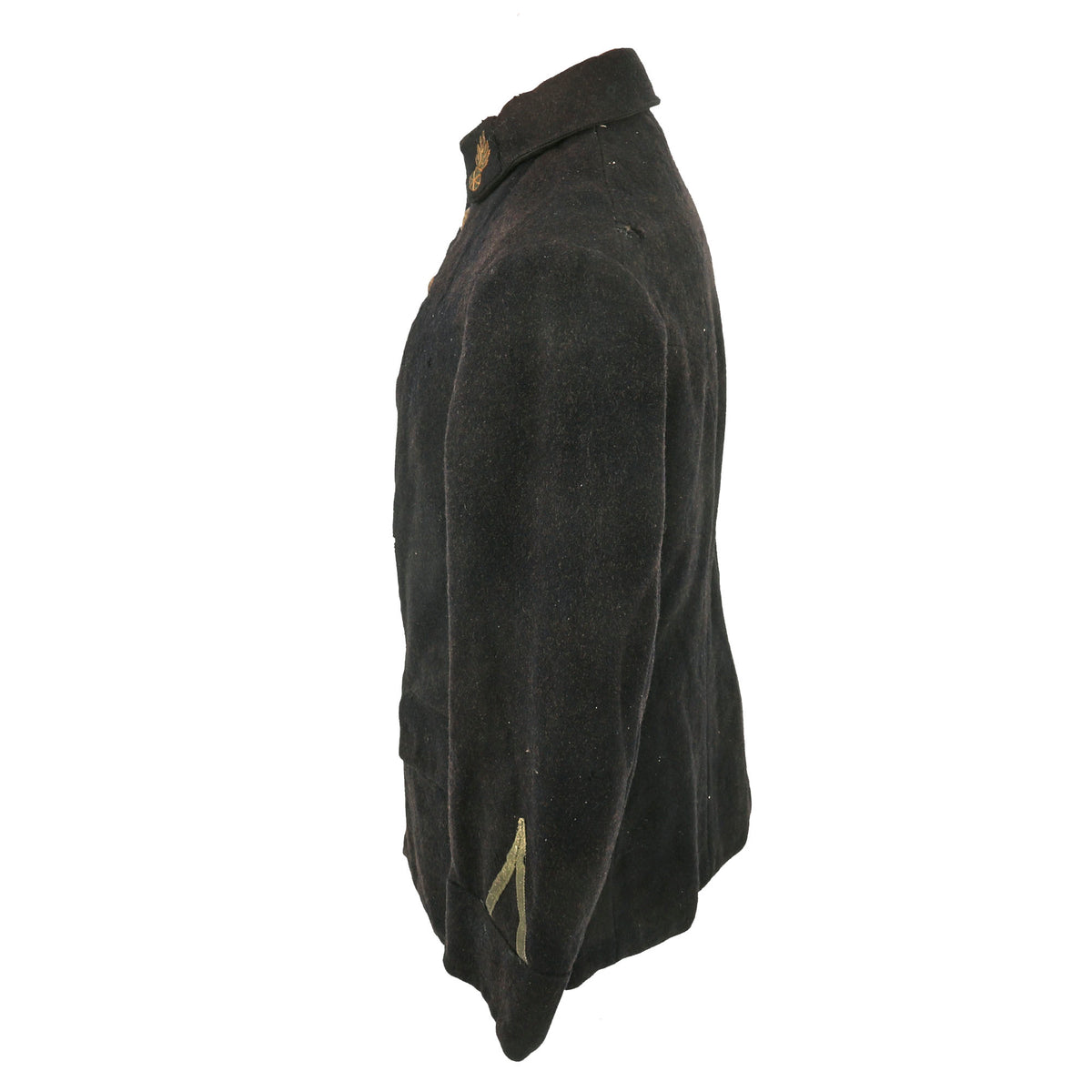Original French WWI Rare First Model Colonial Troops (Tiraullieurs) Dark Blue Tunic – Only Worn For 1 Year Original Items
$ 595,00 $ 178,50
Original Item: Only One Available. This is a fantastic early WWI uniform for the French Colonial Troops, also known as a Tirailleur. A tirailleur, in the Napoleonic era, was a type of light infantry trained to skirmish ahead of the main columns. Later, the term “tirailleur” was used by the French Army as a designation for indigenous infantry recruited in the French colonial territories during the 19th and 20th centuries, or for metropolitan units serving in a light infantry role.
Upon visual inspection, it can be determined that the uniform is in relatively good condition given its rarity. However, there are a few key factors that have had a detrimental effect on its overall state. One of the most noticeable issues is the heavy fading that can be observed throughout the fabric. Additionally, there are numerous areas where moth damage has left holes and frayed edges. Despite this, all of the buttons are still present and attached to the uniform. Unfortunately, the inner lining has suffered from deterioration and there are stains present, which are both telltale signs that this uniform has been worn on multiple occasions.
Until 1914 the Algerian and Tunisian tirailleurs wore zouave style uniforms of light blue with yellow braiding (see photographs on this page). White turbans (for parade), red fezzes and sashes were worn with this “tenue orientale”. A white field dress of similar loose cut was worn for North African campaigning and in France during the early months of World War I. They adopted a more practical khaki uniform from 1915 onwards, in common with the other units of the (North African) 19th Military District. The West African and Madagascan tirailleurs wore a dark blue parade dress with red sash and fez while the Indochinese regiments wore an indigenous style of blue, white or khaki uniform with a flat “salacco” headdress. Khaki had been widely worn as a hot-weather field dress in Indo-China and Africa during the years before the outbreak of World War I and thereafter became the norm. The North African tirailleurs however resumed their colourful full dress uniforms between 1927 and 1939 to assist recruitment. After World War II they were retained until the present day for wear by the noubas (regimental bands).
This is a lovely example and not too many are left on the market! Comes ready to display!
Approximate Measurements:
Collar to shoulder: 9.5″
Shoulder to sleeve: 23.5”
Shoulder to shoulder: 14”
Chest width: 19″
Waist width: 20″
Hip width: 21″
Front length: 31″
Fast Shipping with Professional Packaging
Thanks to our longstanding association with UPS FedEx DHL, and other major international carriers, we are able to provide a range of shipping options. Our warehouse staff is expertly trained and will wrap your products according to our exact and precise specifications. Prior to shipping, your goods will be thoroughly examined and securely secured. We ship to thousands clients each day across multiple countries. This shows how we're dedicated to be the largest retailer on the internet. Warehouses and distribution centres can be located throughout Europe as well as the USA.
Note: Orders with more than one item will be assigned a processing date depending on the item.
Before shipping before shipping, we'll conduct a thorough inspection of the items you have ordered. Today, the majority of orders will be delivered within 48 hours. The delivery time will be between 3-7 days.
Returns
The stock is dynamic and we cannot completely manage it because multiple stakeholders are involved, including our factory and warehouse. So the actual stock may alter at any time. It's possible that you may not receive your order once the order has been made.
Our policy is valid for a period of 30 days. If you don't receive the product within 30 days, we are not able to issue a refund or an exchange.
You can only return an item if it is unused and in the same state as the day you received it. You must have the item in its original packaging.
Related products
Uncategorized
Uncategorized
Uncategorized
Angolan Rebel 1970s era 60mm Inert Display Mortar from Angolan Civil War Original Items
Uncategorized
Uncategorized
Uncategorized
Uncategorized
Uncategorized
Uncategorized
Armoured Fighting Vehicles of the World: AFVs of World War One (Hardcover Book) New Made Items
Uncategorized
Armored Burgonet Helmet & Polearm from Scottish Castle Leith Hall Circa 1700 Original Items
Uncategorized
Uncategorized
Uncategorized
Uncategorized
Uncategorized
Uncategorized
Uncategorized






































































